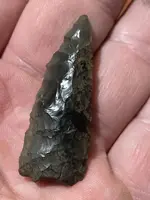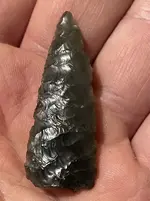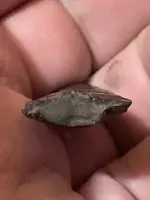Tesorodeoro
Bronze Member
- Joined
- Jan 21, 2018
- Messages
- 1,879
- Reaction score
- 2,996
- Golden Thread
- 0
- Primary Interest:
- All Treasure Hunting
Upvote
0
Nice group of little knives and scrapers. Mostly classed as uni-face, utilized flakes. They can be secondary flakes generated in the process of manufacture. Salvaged and slightly modified for use as precision tools. Can't be attributed to any particular group or time. These tool types are ubiquitous anywhere obsidian is used. In the west and Mexico, for instance.



The last one doesn’t look retouched, looks like the side that faced the sun wind an weather has more of a patina, naturally it would, and base patina is original cortex, Imo.Not uniface, but shares the same patina then retouch.
What’s interesting is the patina is only on one side. Surface finds long ago?
The flaking on the “back” side is very different from what’s on the “front”.
Beautiful flaking all the way across.
I’m not sure if this is a point or a knife. I’m thinking a knife.
Was the base snapped off or was it by design I wonder.
View attachment 1910825
View attachment 1910826
View attachment 1910827
